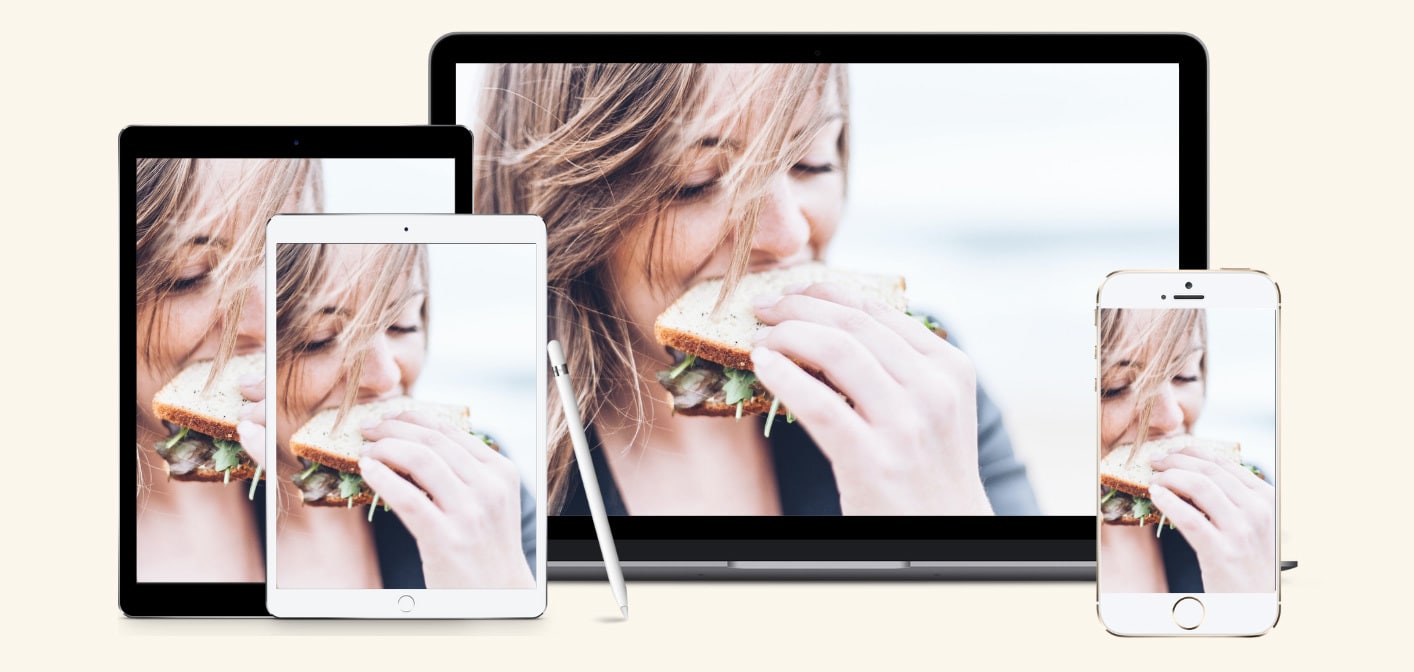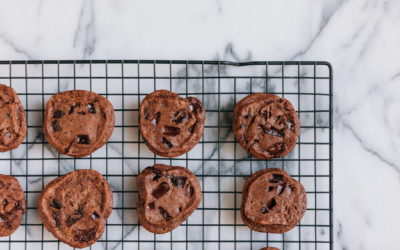
How’d you like to learn how to have better self-control with food?
Follower concern: “Kat, I’m sick of how society currently provides an overload of information on what we should or shouldn’t be eating and how we should or shouldn’t look. It paints a mixed picture in which ’strength’ means being constantly disciplined, thin, healthy, happy and IN CONTROL. But this need to be so in control around food, often seems to lead to my most out of control eating behaviours.”
Hey, thanks so much for sharing your experiences. I couldn’t agree more! We’re told to stay “in control” which is portrayed as “superiority” and actually the messages around food and bodies often have the opposite effect and lead to eating that feels out of control.
Below I am sharing some common reasons why people can feel out of control around food, and how to have better self-control. They might be different to answers that you will find elsewhere on Google!
Step 1: The pursuit of weight loss needs to move aside
Follower concern: “I have an issue with restriction and binge eating. I feel like I can’t control it either way and I find the messages confusing. Intuitive eating conflicts in my brain with trying to stay in a calorie deficit. I am desperate to get away from using My Fitness Pal, but I can’t seem to get a sensible handle on eating in a healthy controlled way.”
One important step to have better self-control with food is to led go of pursuing the thin ideal.
We’re led to believe that our weight is something that we have entire control over. This can lead us to trying to eat in a way to fix our bodies into a size that society deems to be acceptable, which can lead to feeling out of control around food. The body is asking for one thing (satisfaction, pleasure, adequate nutrition), but the mind is telling you to do something else (control, restrict, to not go over your calorie limit).
Unfortunately weight control is not that simple.
If diets worked, we would all be thin, and in fact diets would no longer exist. The staggering truth is that the diet industry is a $60 billion per year industry with an 80-95% failure rate.
Let that sink in.
The diet industry (which has now morphed into the wellness industry) is making a fortune by selling products and promises with limited evidence of being effective and safe in the long term.
It’s only natural for some very strong emotions to be triggered when we realise we’ve been sold a lie.
I remember when I first learned that permanent weight loss was not sustainable for most people. In a way, it was comforting, because it confirmed my personal experiences and what I had witnessed in others up to that point. It was also very sad, however. I had told myself that if only I could get to my ideal weight, life would be better. Giving up that dream was not easy. And I hold the privilege of being in a thin white body. For those who are in marginalised bodies, giving up the thin ideal can be extremely difficult.
Learning to let go of the pursuit of thinness is not the same experience for those in larger bodies, disabled bodies or bodies of colour. This work is not easy, and we simply need to make it a safer and more accepting environment for all bodies, including marginalised bodies to feel safe in the body they have been gifted.
Step 2: Connect with natural hunger signals
Follower concern: “When it comes to the latter, my main problem is that just one taste of sweet or fattening foods will trigger a binge. That I cannot control myself around food and that the idea of being allowed to eat anything will just lead to uncontrollable bingeing.”
In order to have better self-control with food, we have to learn to make peace with them… that means, allowing them into your life. However, before moving to this stage, you HAVE to rule out the biological drive to eat. This means, being able to tune into subtleties of hunger. We have powerful mechanisms and hormones that drive us to eat, which no amount of willpower will be able to override. It’s near impossible to approach food in a way that’s moderate or conscious when you have a primal drive to eat (you’re hungry).
Think of honouring your hunger as your safety blanket. Being adequately fed throughout the day is key to keeping you calm!
Tuning into the subtleties of your hunger can be tricky, especially if you’ve been ignoring them for a while. Some common signs include;
- Head: achey, light headed, dizzy, distracted, poor concentration
- Energy levels: tired, sleepy, sluggish, meh
- Mood: hangry, irritable, cranky, snappy, moody, low
- Stomach: gurgling, rumbling, emptiness, stomach ache, gnawing, sicky feeling
- Body: shaky, quivery, low blood sugar, salivating, sicky feeling in throat or chest
My FREE 20-minute audio guide with an actionable workbook offers more guidance on this.
A good “rule of thumb” if you’re really struggling to connect with hunger is to aim for 3 meals, up to 3 snacks a day, with no more than 4-5hours between eating. This is not a rule, rather, an example of what works well for many. It may be worth finding a trained healthcare provider to support you if you’re struggling to connect with hunger and fullness.
Step 3: Be realistic
Follower concern: “I want to learn how to have better self-control my compulsions and be able to stop after a nice treat rather than being drawn back to the cupboard to keep eating more stuff”.
This may be an example of setting standards too high. Far too often, when I work with clients, their perfect / ideal day of eating includes zero “fun foods”, doesn’t make them feel happy, isn’t satisfying, and just doesn’t fulfil their needs! These high expectations can lead to out of control eating. Where you eat more than is perceived to be acceptable, which triggers the sod it mentality – “I’ve ruined it now, I might as well keep going”. Or, last supper thinking – “I will finish this now, and start again tomorrow”. Both of these can drive out of control eating.
To add to that, there are expectations on “how much” is an acceptable amount. For example, telling yourself you should only be able to have “one treat”. What if some days you need more or less to feel satisfied? Putting limitations on what we “should” eat, can lead to out of control eating if we go above this.
One way how to have better self-control with food, is to check in with your own expectations. Write out what your perfect day of eating might look like, from the moment you wake up, to the moment you go to bed. You can check your ideal against my FREE checklist on “What Eating Well Looks Like”. This can help you to identify if your expectations of yourself are realistic.

Step 4: Challenge your guilty foods
Follower concern: “I feel like I can’t have ‘naughty’ foods very often and certain things never at all. Because of this if I do have these foods I lose control and eat them to excess. For example, when we go on holiday and we eat out a lot, I go crazy and over eat hugely. This doesn’t cause me any discomfort at all physically but only mentally that I feel so bad and frustrated with myself and therefore dread situations where I know I will do this. It’s like I can’t trust myself to trust my full cues – I don’t have any!”
Quite often, the foods we feel out of control are the ones that we’re actively trying to avoid. Having “bad/naughty” foods can induce “last supper mentality” eating. Where our brain isn’t convinced that we will have access to the food again, anticipating future restriction. We therefore feel out of control over the food. In this listener’s case, it might be that post holiday, this listener is anticipating being “good” or “starting again”. This is enough to trigger out of control eating on holiday. There may have even been some form of restriction leading up to the holiday.
The fact that the eating in this listener’s case does not physically feel bad, indicates that they are likely eating an adequate amount of food. However, they have perceived that this is “too much”, based on diet cultures unrealistic standards. This is enough to induce guilt, leading to restrictive behaviour, which in turn fuels out of control eating.
One key way how to have better self-control with food, is to stop labelling foods as good/bad, and eat the food. It’s time to unlearn the food rules that have dictated which foods are “good” and “bad/naughty”.
When you take perceived “bad” foods down off of their pedestal, and bring them onto a level playing field with all other foods (essentially, making chocolate as emotionally charged as a piece of fruit), you get to actually taste the food.
You get to ask: “do I even like this?”, “do I want this right now”, “does this feel good in my body?”, “will I feel deprived if I don’t eat this”, “will this satisfy what I need right now?”.
This way, you can finally decide what foods make you feel good rather than being driven by their emotional charge. This sounds scary, I know. The biggest fear is that we will just eat ‘junk food’ all the time if we eat our ‘forbidden food’.
Whilst it may feel that is the case in the short term, this dissipates as time moves on when you keep a curious and non-judgemental mindset. This process is called habituation – it’s a scientifically proven thing!
I am going to use a non-food example to explain habituation.
Imagine buying a new top that you love…
When you first wear it, it feels exciting!
Maybe you even wear it more than normal at first, however, after time it heads into the draw with all of your other clothes. It still feels nice to wear at times, but you’re not obsessed with it like you were at first. The same happens with food. When we allow it in, we get used to it and whilst it may still taste good, it becomes less exciting.
Let’s look at an example…
Say chocolate is your “forbidden” or “bad” food that you feel obsessed with. You need to be specific about the brand, type and flavour of chocolate. Because if you’re introducing chocolate buttons, chocolate biscuits, chocolate toffees, chocolate icing all at once it will take you 4 x as long to become habitualised to it. Be specific about the brand and flavour!
Next, plan out when you would like to practice eating it whilst giving that chocolate your undivided attention.
Pick at a time when you’re not too vulnerable (I.e. stressed, tired or hungry). 30-60 minutes after a meal is a good time. Practice eating that food paying attention with all the senses.
Tune into the flavour, texture, smell and emotions that arise. Eating mindfully and without judgement can help us to identify whether we actually want this right now.
Step 5: Keep a curious open mindset
Follower concern: “The internal struggle of, but I want it (chocolate, biscuits), it will make me feel better, then the, no it’ll make you gain weight, you won’t be able to stop, then the eating of XYZ, overeating, then the guilt, and almost the internal criticism, I told you you’d feel like this if you ate it… I eat for comfort, but it ends up feeling very out of control! The guilt afterwards is horrible.”
If you tell yourself that when you take a bite, you’re going to eat the whole lot and it will lead to out of control eating, this is exactly what will happen. One way how to have better self-control with food is to challenge your thoughts.
In reality, eating chocolate is not going to make you gain weight.
When we look at the thoughts, versus reality, it can put things into perspective.
Example:
- Thought: “Eating chocolate will make me gain weight”
- Reality: “I try to avoid chocolate, inevitably cave in, feel out of control, eat past what feels physically comfortable, feel guilty, restrict again, which fuels back into the cycle”.
- Alternative perspective: “Eating chocolate will not make me gain weight. It may actually provide enjoyment and satisfy a sweet craving so that I don’t feel out of control when I do eat it”.
In addition, the fear of weight gain is an indication of underlying fat phobia that needs challenging. Educating yourself as much as possible about why weight is not an indicator of health is a good idea. Books like Body Respect and Health at Every Size are a good place to start.
So what’s the verdict on how to have better self-control with food?
As you may have identified from this article, how to have better self-control with food is layered and complex. It’s often rooted in the fear of fatness, and layered in physical restriction (not eating enough or allowing satisfying fun foods in), and/or emotional restriction (allowing the food in, but feel guilty for doing so). The above, require a lot of unlearning, and re-learning, so go easy on yourself.
A good place to start on how to have better self-control with food is to check in with your expectations of yourself. Write out what your perfect day of eating might look like, from the moment you wake up, to the moment you go to bed. You can check your ideal against my FREE checklist on “What Eating Well Looks Like”. This can help you to identify if your expectations of yourself are realistic.







